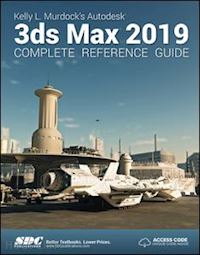Part 1: Getting Started with Autodesk 3ds Max 2019 1. Exploring the Interface 2. Controlling and Configuring the Viewports 3. Working with Files, Importing and Exporting 4. Setting Preferences Part 2: Manipulating Objects 5. Creating and Editing Primitive Objects 6. Selecting Objects and Using Layers 7. Transforming Objects, Pivoting, Aligning, and Snapping 8. Cloning Objects and Creating Object Arrays 9. Grouping, Linking and Parenting Objects 10. Organizing Scenes with Containers, XRefs and the Schematic View Part 3: Modeling 3D Assets 11. Accessing Subobjects and Modifiers and Using the Modifier Stack 12. Drawing and Editing 2D Splines and Shapes 13. Modeling with Polygons 14. Using the Graphite Modeling Tools and Painting with Objects 15. Working with Compound Objects 16. Deforming Surfaces and Using the Mesh Modifiers Part 4: Applying Materials and Textures 17. Creating and Applying Standard Materials with the Slate Material Editor 18. Adding Material Details with Maps 19. Using Specialized Material Types 20. Creating Compound Materials and Using Material Modifiers 21. Creating Shaders in the ShaderFX Editor 22. Unwrapping UVs and Mapping Textures 23. Painting in the Viewport Canvas and Rendering Surface Maps 24. Creating Baked Textures and Normal Maps Part 5: Working with Cameras and Lighting 25. Configuring and Aiming Cameras 26. Using Lights and Basic Lighting Techniques 27. Positioning the Sun and Setting the Lighting Environment 28. Working with Advanced Lighting, Light Tracing, and Radiosity Part 6: Rendering a Scene 29. Rendering a Scene and Enabling Quicksilver 30. Managing Render States 31. Batch and Network Rendering 32. Rendering with ART, mental ray and iray 33. Compositing with Render Elements and the Video Post Interface Part 7: Animating Objects and Scenes 34. Understanding Animation and Keyframes 35. Animating with Constraints and Simple Controllers 36. Exploring the Complex Controllers 37. Using Animation Layers and Animation Modifiers 38. Wiring Parameters 39. Editing Animation Curves in the Track View Part 8: Working with Characters 40. Understanding Rigging, Kinematics and Working with Bones 41. Skinning Characters 42. Animating Characters with CAT 43. Creating Crowds and using Populate Part 9: Adding Special Effects 44. Creating Particles and Particle Flow 45. Using Space Warps 46. Using Atmospheric and Render Effects 47. Creating Volume Light Effects 48. Adding Lens Effects Part 10: Using Dynamic Animation Systems 49. Simulating Physics-Based Motion with MassFX 50. Working with Hair and Cloth Part 11: Extending 3ds Max 51. Customizing the Interface 52. Creating Procedural Content with Max Creation Graphs 53. Automating with MAXScript 54. Expanding Max with Third-Party Plug-Ins











